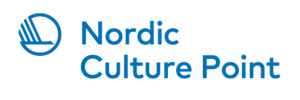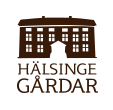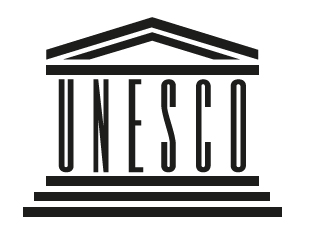Nordic World Heritage VR-Network
-
Nordic World Heritage VR-Network
-

The Nordic-Baltic Mobility Programme for Culture strengthens artistic and cultural cooperation in the Nordic region and the Baltic countries. The programme focuses on increasing the exchange of knowledge, contacts and interest in Nordic and Baltic art and culture. The Nordic-Baltic Mobility Programme comprises three forms of funding: Mobility funding, Network funding and Funding for artist residencies.
The five World Heritage sites Decorated farmhouses of Hälsingland in Sweden, Kvarken Archipelago in Finland, Thingvellir in Iceland, Kongernes Jelling in Denmark and Røros Mining Town and the Circumference in Norway will for the years to come build a nordic network for World Heritage sites who works with virtual reality (VR)
Nordic culturepoint
Network funding enables periods for cooperation, exchange of ideas and knowledge between professional artists and cultural workers in the Nordic region and/or the Baltic countries. That is: Denmark, Estonia, Finland, the Faroe Islands, Greenland, Iceland, Latvia, Lithuania, Norway, Sweden and the Åland Islands.
Network co-operation entails, for example:
- series of joint meetings, conferences, workshops, staff exchanges and joint courses
- activities such as pooling resources and skills in order to develop initiatives that influence public opinion or to work together on scheduling and structuring tours
- the establishment of a collaboration platform that can lead into larger international projects later on.
The Nordic World Heritage VR-Network got funding - 98 300 €
The network will serve to facilitate the exchange of ideas/know how in using VR to communicate the World Heritage content. Many sites have developed vr-experiences independently of each other and sharing results is a way to consolidate progress made as well as learning from each other's mistakes. The objectives of the network will be looking at ways to distribute and share each other's experiences, VR/AR and different hybrids, and make them accessible on each other's sites to new meet audiences.
The idea of World Heritages is originally a cultural and peace project. Today, World Heritage sites play a key role in relations with the rest of the world, fully in line with UNESCO's intentions. The meaning and joy of learning and experiencing World Heritage could still be more interesting and more accessible. Virtual reality (VR) is one way of telling the great cultural stories and at the same time reaching out to new people to benefit and understand their cultural heritage.
By regular meet ups, ongoing discussions together with hosting workshops, the network can test new ideas and practises with all the World Heritage site organisations involved. Visiting sites of different kinds, outdoor, old fragile buildings, remote or urban, the network will be able to work with a wide variety of the challenges involved with communicating and making these sites accessible to a wider audience. Some of the workshops will include presentations from tech-partners but also experiments with live-guiding and storytelling in VR.
We must cooperate
We believe that the World Heritage sites must cooperate with each other and add other cultural sectors into the world of interpretation. Crossmedia, film, gamification as well as history, handicraft, storytelling and even architecture must work together in a cross-sectoral way. In this way, we can attract new target groups - an accessibility issue in a sustainable future perspective. World Heritage Nordic VR-Network aims to establish a global network - though we have many Nordic contacts, it feels natural to start with the Nordic World Heritage sites. A network for VR is of great benefit for culture, innovation, competence and accessibility. Through an international network, we can together find new ways with technology as a platform for communicating new stories about World Heritage. A person from the village Bollnäs in Hälsingland shall have the right to experience sites as Thingvellir in Iceland, Rauma in Finland or Rjukan-Notodden in Norway to understand the meaning of how culture connects with democracy and peace and that our different culture unites us rather than divides us. That’s the spirit of World Heritage sites. By connecting us in this network we will share and develop that idea.
The aim of the network is to cooperate, exchange and develop ideas and through the network be able to share VR-experiences of different World heritage Sites; first the Nordic and after that - go global. We will accomplish this by sharing resources and competencies. All for future initiatives and collaborate structures by VR-experiences in the cultural heritage sector. Our vision is to establish a collaboration platform that can later lead to major international projects.
To be relevant and accessible
Even in an ever-changing world, World Heritage should always be relevant and accessible. Communication, creativity and education has for long been at the core of the work undertaken by World Heritage sites. The World Heritage VR-Network will explore new ways of bringing World Heritage into the future virtual world, with the strong aim of not only ensuring that it remains relevant, accessible and sustainable, but also is more easliy disseminated towards ex schools and libraries.
Some of the World Heritage sites in the north have started developing VR-based experiences, independently of each other, as a strategy of reaching an audience with their content. Each with their own individual challenges. These parallel experiments have yielded many interesting results but such development is costly and trial and error can be a fatiguing process. By connecting to each other, these sites can share their results, best case practices as well as mistakes. By creating a network for World Heritage sites working with VR, learning about communication in a new medium can be aggravated at a lesser cost in regards to both time and money.
The new coronavirus disease (COVID-19) presents additional challenges. The pandemic will likely affect the physical visits to World Heritage sites, for a long time. With larger gatherings being impossible and travel being restricted, digital solutions and virtual meeting places become an attractive and important alternative to explore.
The network
Thingvellir (Torfi Stefán Jónsson. Iceland) Through VR-tech, Lögrétta (e. the law council) has sprung to live. Our guests can look at Lögrétta from outside, from VR-pilars or step in and be at the center. There are remains who are “hidden” or intangible wich can be visualized with VR or AR.
Kongernes Jelling (Adam Bak. Denmark). Kongernes Jelling have a test-center where ways to mediate and communicate main stories is being tested; 3D soundscapes, projection-mapping, AR, escape rooms. The test center is an obvious place for us to continue the VR-work.
High Coast/Kvarken Archipelago (Kenth Nedergard Finland/Sweden) To offer visitors to visit different parts, we have a 360-degree VR film where the visitor flies with an eagle from the Replot Bridge on the Finnish side to the High Coast Bridge in Sweden. We will offer this VR-travel and show other virtual world heritage objects in our visitor center.
Røros Mining Town and the Circumference (Torfinn Rodhe. Norway) The Røros museum has, in partnership with Anno Museum and Innlandet County Council, started to build knowledge about digital dissemination and VR with two tech clusters; the Hamar Game Collective and the VR cluster VRINN. This partnership ensures possibilities for future digital dissemination.
Decorated Farmhouses of Hälsingland (Anna-Karin Ferm, Henrik Harrysson, Lena Landström, Josephine Rydberg, Sweden) We have developed different kinds of VR-experiences; VR-room and 360-experiences. The next level is to share experiences and interact together in an VR-enviroment.


